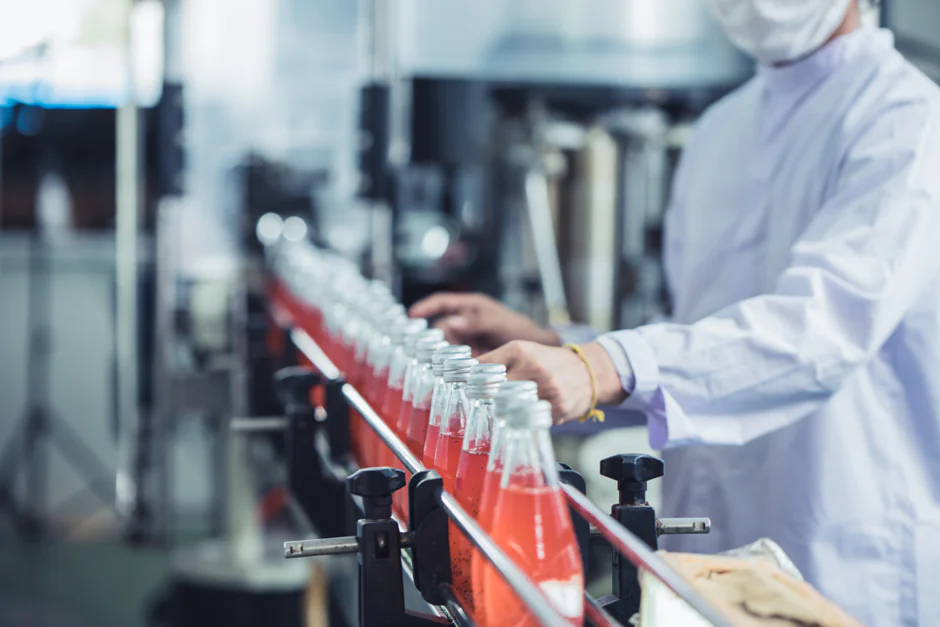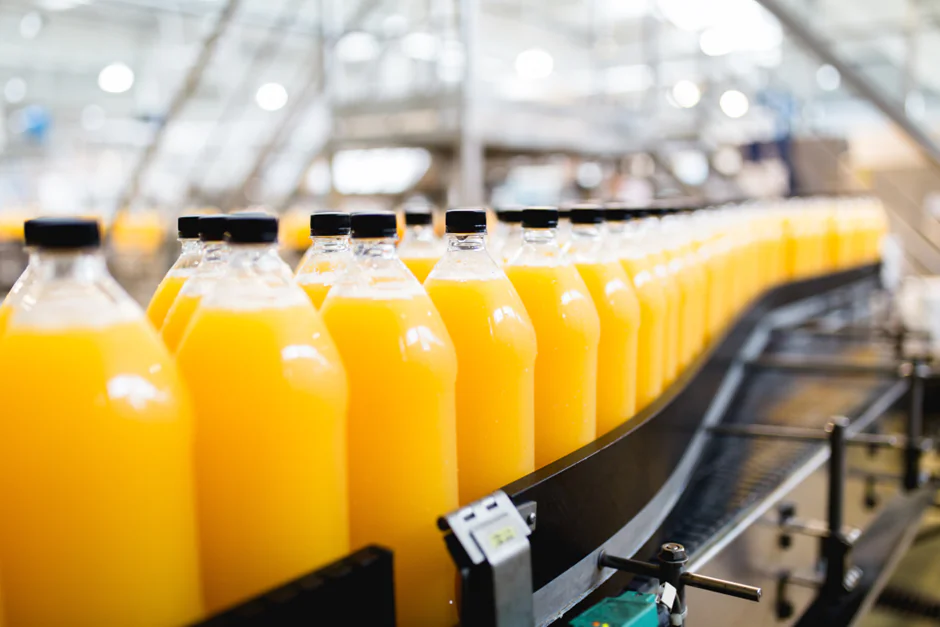Written by: Sudeshna Ghosh
Table of Contents
AI-Driven Transformation in Food & Beverage Manufacturing
The food and beverage industry, characterized by constant change and consumer-driven trends, is ideally positioned to benefit from AI’s transformative power metrics. from this article, you’ll get detail demo on how AI’s integration into food manufacturing brings several key advantages:
- Optimization of Production Processes: AI technology and big data algorithms analyze extensive amounts of data to optimize production lines, leading to increased efficiency and reduced costs. This optimization is crucial in a fast-food industry where timely response to market demands can significantly impact success.
- Quality Control and Food Safety: AI-powered systems and data visualization automate critical tasks in many organizations such as quality control events and food safety inspections. By reducing the risk of human error and providing accurate information, these systems ensure higher standards of safety and compliance.
- Predictive Maintenance in Manufacturing: AI’s language predictive analytics and image enable manufacturers to foresee equipment failures before they occur, reducing downtime and maintaining continuous, efficient operations.
- Automation and Robotics tools in Packaging: The use of AI-driven robots and others in food processing and packaging not only streamlines operations but also significantly boosts production output, meeting the high demands of the market.
- Waste Reduction and Sustainability: AI contributes to waste reduction in food manufacturing, and increase beverage market size, aligning with the industry’s move towards sustainability. By optimizing processes and reducing food waste, AI supports environmentally friendly practices.
- Enhanced Customer Experience: AI’s role extends to improving the customer experience. From personalized product recommendations to efficient supply chain management, AI ensures that consumers’ needs are met promptly and accurately.
- Incorporation of Sensors: AI sales dashboard leverages sensors for real-time data analysis news, enhancing traceability and enabling smarter decision-making throughout the manufacturing process.
In this rapidly evolving world, AI marketing analytics stands as a beacon of innovation, guiding the food and beverage industry towards a future marked by efficiency, quality, and sustainability.
Want to learn more about our analytical methodologies and statistics? Speak with our analytics experts today!
The Transformative Impact of AI on Food & Beverage Manufacturers

Artificial intelligence is revolutionizing the food and beverages restaurants and industry by enabling manufacturers to quickly adapt to changing consumer tastes and preferences. This rapid adaptability is crucial in tracking the right audience for each product. AI-driven order number analytics and Microsoft, erp, webinar, and linkedin reports help brands research consumer behavior trends, allowing them to place the correct product in front of the right customer. Quantzig’s advanced customer type analytics, crm, choices, visibility, and source sales store analytics solutions provide real-time, data-driven insights into profitable customer groups areas. These insights are pivotal in identifying customers’ unique needs, creating focused strategies for targeted promotions, knowledge, flexibility, ensuring customer retention, blog, space, and ultimately achieving brand advocacy.
The food retail and restaurant businesses and companies, encompassing everything from fast food outlets to supermarkets, are greatly impacted by changing consumer preferences. AI aids these sectors in adapting to these changes, thereby driving business growth and money. The rise in health awareness, disposable incomes, and demand for natural and organic part products are key factors influencing the industry. AI helps in capitalizing on these trends by providing valuable insights from customer datasets, enabling food retailers to adapt and enhance their market share.
Challenges and AI Solutions in Food and Beverage Manufacturing
Implementing AI in the food and drinks industry comes with its own set of challenges, but the solutions it provides are revolutionary:
- Addressing Volatile Consumer Preferences: The rapidly changing consumer preferences, especially towards organic and health-conscious foods, pose a significant challenge. AI helps in navigating these changes by providing insights and reporting into consumer behavior and market trends.
- Growing Competition: As competition intensifies, especially with the rise of private labels, AI enables manufacturers to stay ahead by innovating and adopting new business models. AI-driven analytics play a crucial role in understanding market dynamics and consumer demands.
- Overcoming Supply Chain Volatility: AI solutions enhance supply chain resilience, allowing food and beverage’s manufacturers to adapt to changes in consumption patterns and market disruptions. Predictive analytics in AI helps in forecasting demand and optimizing inventory management.
- Data Analysis and Customer Targeting: AI platform aids in identifying target customers for specific products times, tackling the challenge of matching consumer profiles with the appropriate product offerings. By analyzing customer data, AI enables more effective marketing strategies and customer engagement.
- Enhancing Operational Efficiency, employee’s revenue, and profitability capabilities: AI’s role in streamlining operations, from production to distribution, addresses the key issues of maintaining efficiency in a complex industry. This includes optimizing production planning teams, reducing waste, and improving logistics.
- Improving Quality Control and Compliance: AI systems enhance quality value control processes and ensure compliance with food safety standards, addressing the critical need for maintaining high standards in food manufacturing.
Through these data analytics solutions, AI dashboard is not just overcoming challenges but is also setting new benchmarks in efficiency, innovation, and customer satisfaction in the food and beverage manufacturing industry.
Key Takeaways: The Impact of AI in Food and Beverage Manufacturing

The integration of AI in food and beverage manufacturing heralds a new era of efficiency, innovation, and customer-centric approaches. Here are some key takeaways highlighting the importance of AI:
- Enhanced Consumer Insights and Targeting: AI’s power bi (business intelligence) ability to analyze complex data strategy sets allows manufacturers to gain deeper insights into consumer preferences and behaviors. This enables precise targeting and development of products and its pricing strategies that resonate with specific consumer segments.
- Increased Operational Efficiency performance: Automation and robotics, driven by AI goals, significantly enhance the way and efficiency of manufacturing processes. From sorting and packaging to inventory management, AI streamlines operations, reducing time and costs.
- Advanced Quality Control: AI systems ensure high standards of quality and compliance, minimizing risks associated with food safety. This not only protects consumer health but also enhances the brand’s reputation and trust.
- Predictive Maintenance for Reduced Downtime: AI-enabled predictive maintenance helps foresee and prevent equipment failures, ensuring continuous and uninterrupted production, which is crucial in meeting market demands.
- Sustainable Practices and Waste Reduction: Food and beverage analytics decisions with AI contributes to sustainability in the food and beverage industry by optimizing processes to reduce waste. This aligns with the growing consumer demand for environmentally responsible practices.
- Improved Customer Satisfaction and Loyalty: By ensuring quality, safety, and timely delivery of products, AI plays a significant role in enhancing customer satisfaction and loyalty, which are key drivers of business growth.

In summary, cutting-edge AI in food and beverage manufacturing company is not just a technological advancement; it’s a strategic tool that propels the industry forward, addressing challenges and creating opportunities for growth and innovation.
FAQs on AI in Food and Beverage Manufacturing
- How is AI being used in food and beverage manufacturing? AI methods in food and beverage services industries is used for automating quality control, optimizing production processes, predictive maintenance, and enhancing supply chain efficiency. It also plays a crucial role in analyzing consumer data for better targeting and product development.
- What are the benefits of using AI in the food and beverage industry? The benefit results in increased operational efficiency, eye-catchy content, improved quality control, reduced production costs, enhanced food safety and ingredients, and better alignment of products materials with consumer preferences. AI also aids in waste reduction and sustainable manufacturing practices.
- Are there any examples of successful AI software implementations in this sector? Yes, many food and beverage resources manufacturers have successfully implemented AI for various level such as predictive maintenance, demand forecasting, and real-time quality control, leading to significant improvements in efficiency and product quality.
- What challenges are faced when implementing AI in food and beverage manufacturing? Challenges include integrating AI channels with existing systems, ensuring data accuracy, adapting AI solutions to specific industry needs, questions, and training staff to work with new technologies. Additionally, maintaining compliance with food safety regulations when implementing AI is crucial.
- How does AI improve quality control in this industry? AI improves quality control by automating inspection processes, using machine learning algorithms to detect defects, and ensuring compliance with safety standards. This reduces the risk of human error and enhances the overall quality of products.
Can AI help optimize production processes in food and beverage manufacturing? Absolutely. AI helps optimize production processes by analyzing large data sets to identify inefficiencies, predict equipment maintenance needs, and streamline various aspects of the manufacturing process. This leads to cost savings, reduced downtime, and improved productivity.


